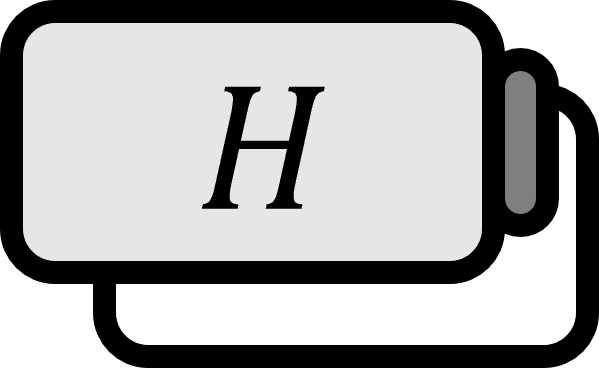Proving that Every Separable Hilbert Space is Isometric to the l^2 space
Theorem1
Every infinite-dimensional separable Hilbert space $H$ is isometrically isomorphic to $\ell^{2}$.
Description
The fact that a separable Hilbert space is isometrically isomorphic to $\ell^{2}$ essentially means that in the study of Hilbert spaces, one can focus solely on $\ell^{2}$.
Proof
Gram-Schmidt Orthogonalization of Separable Hilbert Spaces
Every separable Hilbert space has an orthonormal basis.
Corollary of Bessel’s Inequality
If $\left\{ \mathbf{v}_{k} \right\}_{k \in \mathbb{N}}$ is an orthonormal set in the Hilbert space $H$, the following holds:
For every $\left\{ c_{k} \right\}_{k \in \mathbb{N}} \in \ell^{2}$, the infinite series $\sum_{k \in \mathbb{N}} c_{k} \mathbf{v}_{k}$ converges.
Following the Gram-Schmidt orthogonalization, the Hilbert space $H$ obtains an orthonormal basis $\left\{ \mathbf{e}_{k} \right\}_{k \in \mathbb{N}}$, and according to the corollary, the convergence of $\sum_{k \in \mathbb{N}} c_{k} \mathbf{e}_{k}$ is guaranteed for every $\left\{ c_{k} \right\}_{k \in \mathbb{N}} \in \ell^{2}$. Now, consider $\left\{ \delta_{k} \right\}_{k \in \mathbb{N}}$ as the orthonormal basis of $\ell^{2}$ and define the operator $U : H \to \ell^{2}$ as follows:
$$ U \left( \sum_{k \in \mathbb{N}} c_{k} \mathbf{e}_{k} \right) := \sum_{k \in \mathbb{N}} c_{k} \delta_{k} $$
Then, $U$ is a bijective mapping between $H$ and $\ell^{2}$.
Equivalence Conditions of Orthonormal Bases: Assume $H$ is a Hilbert space. For an orthonormal system $\left\{ \mathbf{e}_{k} \right\}_{k \in \mathbb{N}} \subset H$ of $H$, the following are equivalent:
- (i): $\left\{ \mathbf{e}_{k} \right\}_{k \in \mathbb{N}} \subset H$ is an orthonormal basis of $H$.
- (ii): For every $\mathbf{x}\in H$ $$ \mathbf{x}= \sum_{k \in \mathbb{N}} \langle \mathbf{x}, \mathbf{e}_{k} \rangle \mathbf{e}_{k} $$
- (iv): For every $\mathbf{x}\in H$ $$ \sum_{k \in \mathbb{N}} \left| \langle \mathbf{x}, \mathbf{e}_{k} \rangle \right|^{2} = \left\| \mathbf{x}\right\|^{2} $$
Every $\mathbf{v} \in H$ uniquely decomposes with respect to the orthonormal basis $\left\{ \mathbf{e}_{k} \right\}_{k \in \mathbb{N}}$ as follows:
$$ \mathbf{v} = \sum_{k \in \mathbb{N}} \left\langle \mathbf{v} , \mathbf{e}_{k} \right\rangle \mathbf{e}_{k} $$
Therefore,
$$ \begin{align*} \left\| U \mathbf{v} \right\|^{2} =& \left\| \sum_{k \in \mathbb{N}} \left\langle \mathbf{v} , \mathbf{e}_{k} \right\rangle \delta_{k} \right\|^{2} \\ =& \sum_{k \in \mathbb{N}} \left| \left\langle \mathbf{v} , \mathbf{e}_{k} \right\rangle \right|^{2} \\ =& \left\| \mathbf{v} \right\|^{2} \end{align*} $$
and, $U : H \to \ell^{2}$ is an isometric isomorphism.
■
Ole Christensen, Functions, Spaces, and Expansions: Mathematical Tools in Physics and Engineering (2010), p82-83 ↩︎
